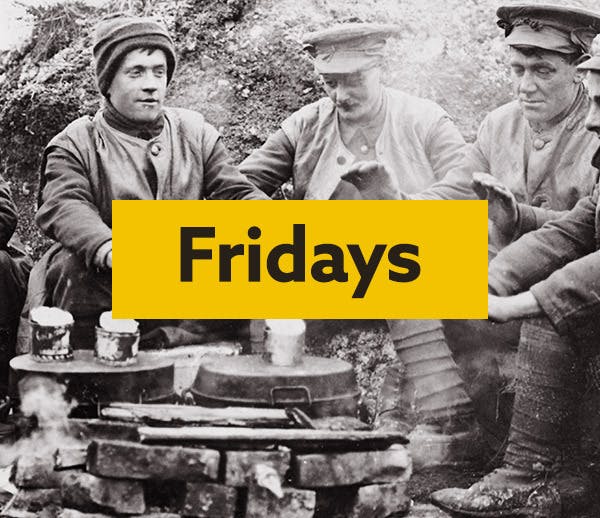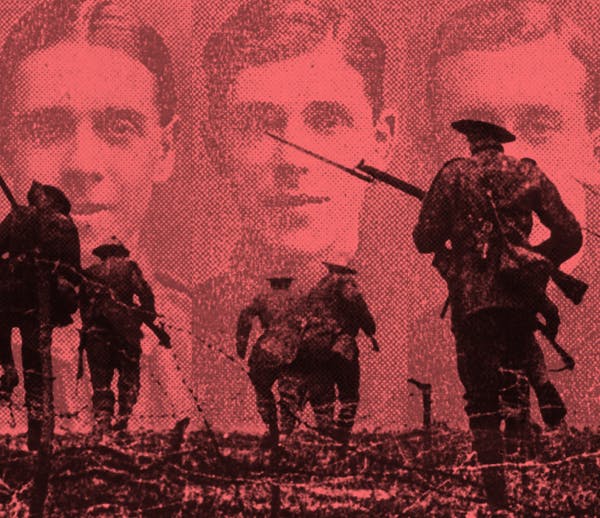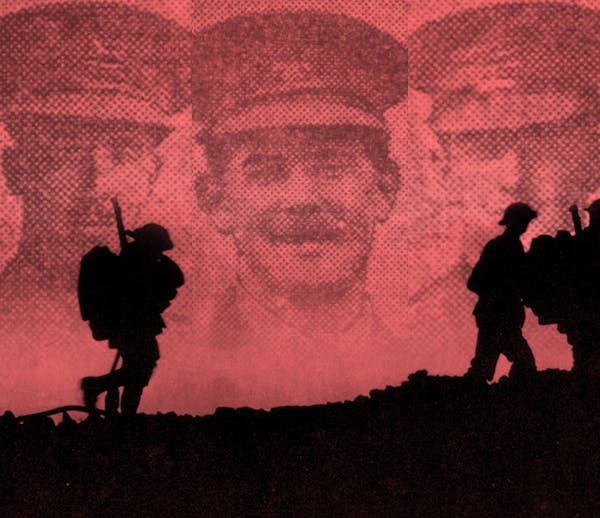Explore everything from nurses to the Navy this week
6-7 minute read
By Jessie Ohara | March 25, 2022
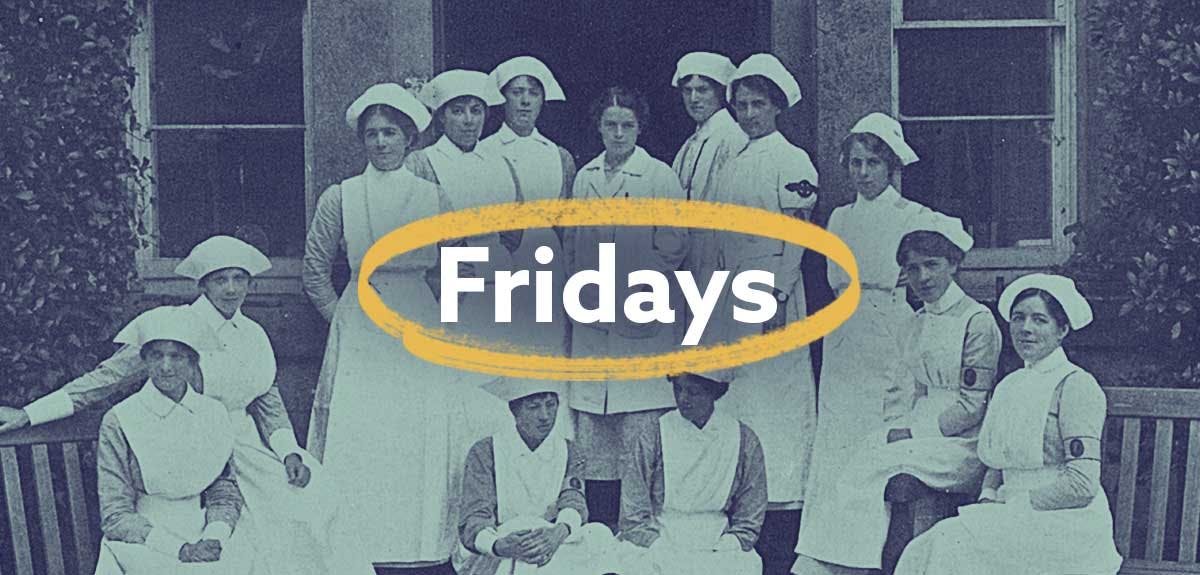
And with 169 new and updated newspaper titles, there are more stories than ever before.
This week, we have two additions to existing record sets and one entirely new collection, so if you've been struggling to locate an ancestor in our indexes before today, make sure to take a look.
Middlesex Monumental Inscriptions
We've added nearly 4,000 new records to this collection, across seven parishes. You can find a full parish list here.
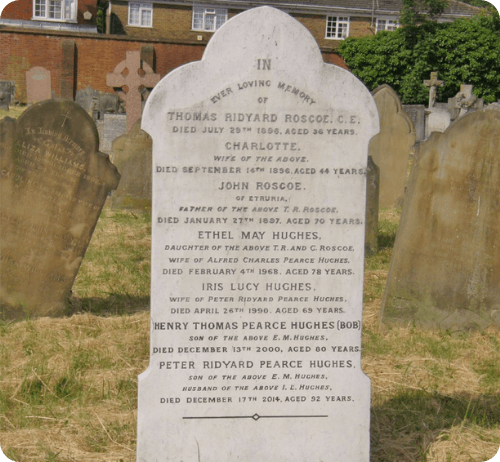
An image from the Middlesex Monumental Inscriptions.
Not only will monumental inscriptions give you biographical details of your ancestor, such as birth name, birth year, and death year, but they can be incredibly useful when discovering other relatives. Often, families were buried together, and their inscriptions placed next to each other on the headstone. By locating one ancestor, you may be able to trace entire families, expanding your family tree.
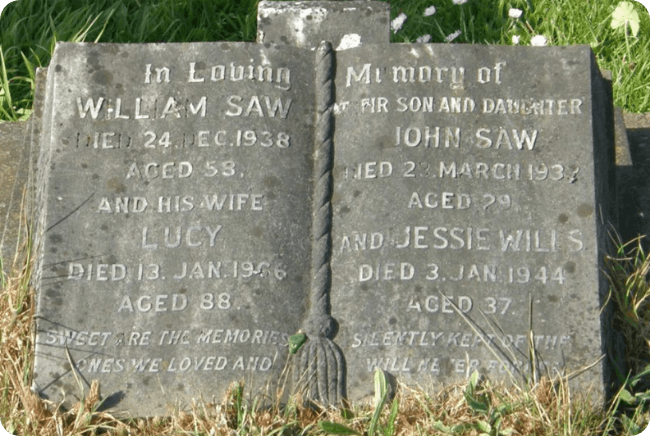
A monumental inscription from the Middlesex Monumental Inscriptions collection.
On these graves, you may also find poetry, poignant goodbye notes, and final sentiments, making this collection particularly well-rounded in terms of painting a bold picture of your ancestor's life. You won't find these records on any other site, so make sure to take a browse.
Military Nurses 1856-1994
We've added nearly 9,000 records to this collection. These records mainly focus on military nurses who served in the Queen Alexandra’s Imperial Military Nursing Service, the Queen Alexandra’s Imperial Military Nursing Service (Reserve) and the Territorial Force Nursing Service during the First World War.
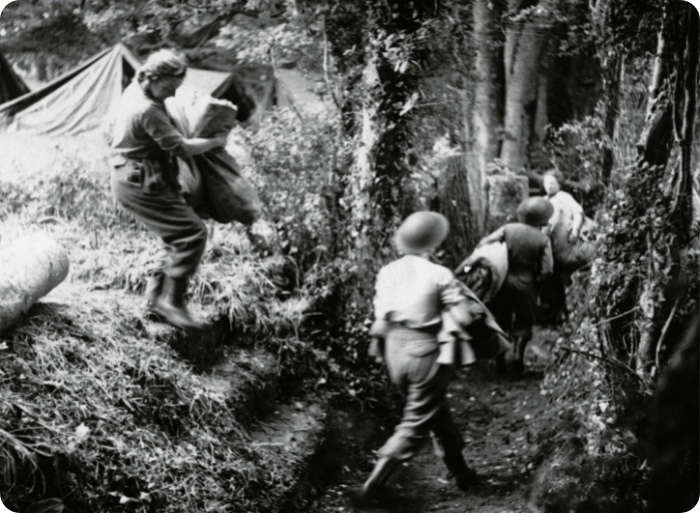
The information in these records varies considerably, but you may be able to find out your ancestor's rank or rating, education and qualifications, training school, or even father's occupation, making these a valuable resource for your military research.

After the Boer Wars of 1899 and 1902, the reorganization of the Army Medical Service led to the formation of Queen Alexandra’s Imperial Military Nursing Service by royal warrant in 1902. Like the Army Nursing Service, it was often stipulated that these women had to be over 25, single, and of a higher social class - though the social standing requirement was largely dropped during the First World War.
Indian Navy Records Of Service 1840-1947
Did your ancestor take their service to the seas? You may just find out in our new Indian Navy Records of Service index.
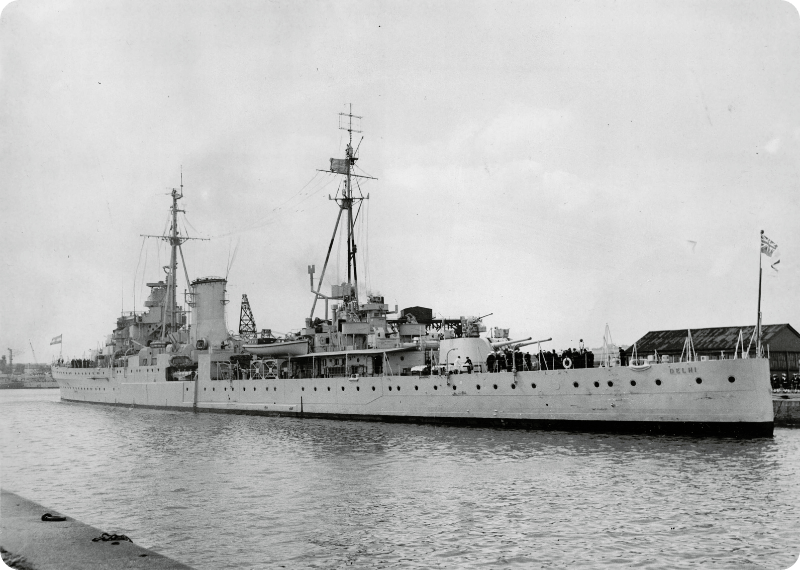
The Indian Navy's first cruiser, replacing HMS Achilles, 1948, from the Findmypast Photo Collection.
This set works well as a complimentary resource to the Indian Army Records Of Service 1900-1947. If you have traced your ancestor's military history through the Indian Army, this set could help you solidify their journey.
You may be able to discover crucial information such as rank, regiment, and time served.
Military women throughout the ages
Women didn't just take the role of nurses during the First and Second World War. Due to the sheer scale of the Great War, women's involvement became less frowned upon and more of a necessity. The Women's Royal Air Force was created at the same time as the RAF, allowing women to serve during the First World War and introducing them to a new form of labor. You can find over 31,000 of these service records here.
The Women's Royal Air Force was often filled with volunteers from the previously-existing Women's Army Auxiliary Corps, which you can find our records for here. This collection is a rich resource for any family historian, as it does not just include service records, but often documents such as application forms, health forms, and physical examinations. This means you may not just discover your ancestor's rank or rating, but their height, build, religion, distinctive marks, medical issues, nationality and permanent address.
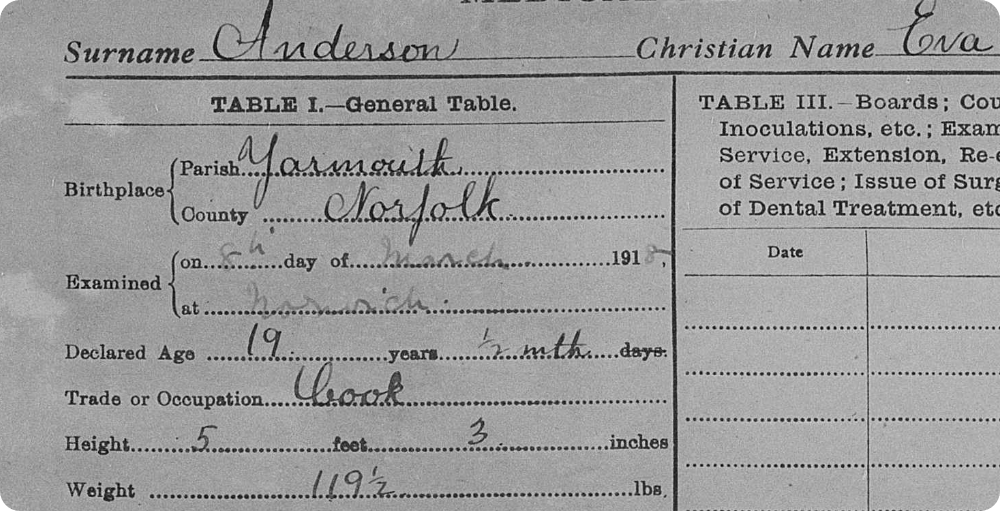
An example of the a medical history record from the Women's Auxiliary Corps collection.
That's not all, though. Discover the Honorable Women of the Great War, 1914-1919. This focused collection contains incredible biographical detail around women that were honored for their service during World War One, including years of service and country of service. However, a closer look at the image rather than the transcription may give even more information, such as a biography of their pre-war activities, accounts of their service during the war, and their place of permanent residence or resignation. You may also find a photograph of your ancestor, making this collection exceptionally valuable for your research.
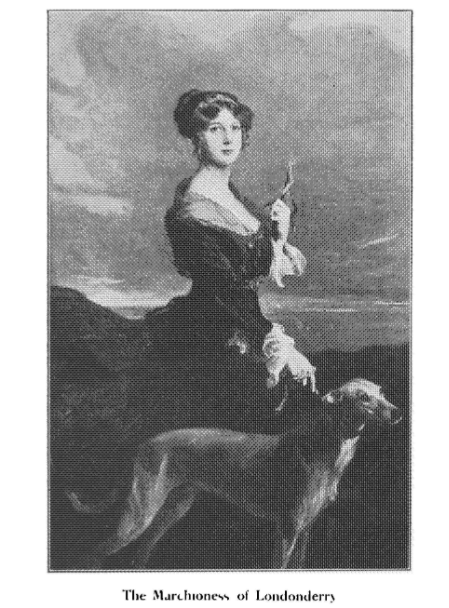
An image of the Marchioness of Londonderry, from our Honorable Women of the Great War collection,
If you're looking to discover more about the social landscape as women entered the services, our expansive Photo Collection contains an incredible range of photographs throughout the Second World War. You can find women in the trenches, setting up camp, or in hospitals, all serving their country in these stunning black and white images.
In the news
We may have released three incredible new additions to our records this week, but we haven't been idle with newspapers. This week, we have 22 brand-new titles, and an absolutely immense 147 updated titles. Discover the 'Record of Commercial Progress in Australia' in McPhun's Australian News, which documented everything from gold mining to emigration - or, if you're feeling more political, discover the Kent Times' outspoken support of the working classes with its proclamation that 'liberals of the towns and villages of Kent have long felt the want of a more spirited and more earnest press representation'. Discover everything that's new below.
New titles:
- Bebington News, 1987-1988
- Brentwood Gazette, 1988-1989
- Carlisle Examiner and North Western Advertiser, 1857-1870
- Caterham Mirror, 1988
- Clevedon Mercury, 1872
- Dumfries & Galloway Courier and Herald, 1884-1894, 1896
- East Cleveland Herald & Post, 1987-1988
- Grantown Supplement, 1894-1912
- Ilfracombe Chronicle, 1882, 1888
- Isle of Thanet Gazette and Thanet Times, 1877
- Kent Times, 1875-1889, 1891-1912
- McPhun’s Australian News, 1853-1855
- Middlesbrough Herald & Post, 1987
- Newmarket Weekly News, 1889
- Radnorshire Standard, 1898-1909
- Royston Weekly News, 1907, 1910
- Rugeley Mercury, 1889
- Ruislip & Northwood Gazette, 1988
- Salford Advertiser, 1987-1988
- Uttoxeter Newsletter, 1987
- Wembley Leader, 1988
- Woodford and District Advertiser, 1906-1915
Updated titles:
- Abergele & Pensarn Visitor, 1987
- Acton Gazette, 1986
- Aldershot News, 1986
- Annandale Herald and Moffat News, 1886-1888
- Annandale Observer and Advertiser, 1891
- Ashbourne News Telegraph, 1989
- Atherstone News and Herald, 1886, 1891, 1893
- Bacup Times and Rossendale Advertiser, 1873
- Banbury Beacon, 1897
- Barnsley Chronicle, etc., 1897
- Beckenham Journal, 1912
- Bedfordshire Mercury, 1911
- Bedfordshire on Sunday, 1991
- Bexhill-on-Sea Chronicle, 1899-1905, 1907-1910
- Birkenhead News, 1987
- Birmingham Daily Post, 1992
- Birmingham Mail, 1898, 1991
- Birmingham Weekly Mercury, 1989, 1992
- Birmingham Weekly Post, 1910
- Blackburn Times, 1888
- Blackpool Gazette & Herald, 1897
- Bournemouth Daily Echo, 1911
- Bridge of Allan Reporter, 1875, 1877
- Bridport News, 1870
- Brighton Guardian, 1876
- Brighton Herald, 1870
- Buckinghamshire Examiner, 1987
- Burton Daily Mail, 1912, 1989, 1992
- Burton Trader, 1987
- Bury Times, 1856, 1871, 1880
- Caernarvon & Denbigh Herald, 1834, 1836
- Cambria Daily Leader, 1908
- Cambridge Daily News, 1987-1988
- Canterbury Journal, Kentish Times and Farmers’ Gazette, 1859
- Cardiff Shipping and Mercantile Gazette, 1890-1891
- Carmarthen Journal, 1985
- Central Somerset Gazette, 1986
- Chatham News, 1988
- Cheddar Valley Gazette, 1986
- Chepstow Weekly Advertiser, 1855-1856, 1863
- Chester Chronicle, 1960, 1991-1992
- Clerkenwell Dial and Finsbury Advertiser, 1863
- Croydon Times, 1879, 1889, 1900, 1911
- Daily Record, 1991
- Deal, Walmer & Sandwich Mercury, 1897
- Derby Express, 1992
- Dewsbury Reporter, 1871
- Dorking and Leatherhead Advertiser, 1987
- Dover Chronicle, 1894
- Dumfries and Galloway Standard, 1987
- Dundalk Examiner and Louth Advertiser., 1930
- Dunfermline Saturday Press, 1891
- Durham Chronicle, 1856, 1897
- East Anglian Daily Times, 1889
- East Grinstead Observer, 1897, 1987
- Edinburgh Evening Dispatch, 1893, 1896
- Edinburgh Evening News, 1913, 1922
- Ellesmere Port Pioneer, 1992
- Essex Standard, 1873
- Essex Times, 1871, 1889
- Essex Weekly News, 1886, 1897
- Evesham Journal, 1865
- Express and Echo, 1898
- Faringdon Advertiser and Vale of the White Horse Gazette, 1871
- Faversham News, 1889, 1899
- Fenland Citizen, 1980
- Glamorgan Gazette, 1897, 1980, 1983
- Glasgow Evening Times, 1894
- Gloucester Citizen, 1962
- Gloucester News, 1987-1988
- Gloucestershire Echo, 1895-1896
- Grimsby Daily Telegraph, 1991
- Hampstead & Highgate Express, 1892
- Harlow Star, 1987, 1989
- Harrow Observer, 1964, 1991-1992
- Hertford Mercury and Reformer, 1991-1992
- Herts and Essex Observer, 1983, 1990-1991
- Hinckley News, 1888
- Hinckley Times, 1898
- Hoddesdon and Broxbourne Mercury, 1991-1992
- Horley & Gatwick Mirror, 1988
- Hounslow & Chiswick Informer, 1987
- Huddersfield and Holmfirth Examiner, 1911
- Huddersfield Daily Examiner, 1911-1913, 1992
- Hull Advertiser and Exchange Gazette, 1862
- Illustrated Malvern Advertiser, Visitors’ List, and General Weekly Newspaper, 1858, 1892
- Irvine Herald, 1987
- Islington Times, 1863
- Kelso Mail, 1891
- Kent & Sussex Courier, 1987, 1992
- Kentish Gazette, 1887-1891
- Kilmarnock Standard, 1991
- Kinross-shire Advertiser.,1891
- Lancaster Gazette, 1886
- Lancaster Guardian, 1880, 1910
- Leek Times, 1871-1872, 1912
- Liverpool Evening Express, 1874, 1897-1898, 1910
- London & Provincial News and General Advertiser, 1867
- London and China Express, 1918, 1920
- London Chronicle, 1809
- Long Eaton Advertiser, 1898
- Louth and North Lincolnshire Advertiser, 1872
- Lowestoft Journal, 1873
- Ludlow Advertiser, 1889
- Lynn Advertiser, 1946-1949, 1958-1962, 1964-1966
- Man of Ross, and General Advertiser, 1861
- Merthyr Express, 1987
- Middlesex County Times, 1942, 1983
- Montgomeryshire Echo, 1890
- Morning Herald (London), 1831
- New Times (London), 1830
- Newcastle Daily Chronicle, 1926
- Newport Gazette, 1888
- North Devon Herald, 1873, 1889
- North Star (Darlington), 1909, 1912, 1923
- North Wales Chronicle, 1874
- Northern Advertiser (Aberdeen), 1885-1887
- Northern Weekly Gazette, 1868
- Nottingham Evening Post, 1985, 1989-1991
- Nuneaton Chronicle, 1911-1912, 1921-1943
- Oldham Advertiser, 1988
- Ossett Observer, 1886
- Paddington Advertiser, 1861
- Paisley Daily Express, 1987, 1990, 1992
- Pulman’s Weekly News and Advertiser, 1896
- Retford, Gainsborough & Worksop Times, 1896, 1983-1984
- Richmond Informer, 1987
- Rossendale Free Press, 1912
- Runcorn Guardian, 1912
- Saffron Walden Weekly News, 1911
- Sevenoaks Chronicle and Kentish Advertiser, 1911
- Southall Gazette, 1983
- Spalding Guardian, 1938
- Stockport County Express, 1911
- Sunbury & Shepperton Herald, 1988
- Sunday Gazette, 1866
- Sunday Sun (Newcastle), 1926, 1934
- Surrey Advertiser, 1911
- Surrey Mirror, 1988
- Uxbridge & W. Drayton Gazette, 1897
- Walsall Observer, and South Staffordshire Chronicle, 1913, 1920, 1923, 1936, 1947, 1950, 1954, 1956-1957
- West Lothian Courier, 1989
- West Surrey Times, 1897-1898
- Widnes Examiner, 1878-1879
- Winsford Chronicle, 1976, 1978, 1988-1989
- Wishaw Press, 1991, 1993
- Wokingham Times, 1988-1989
To discover the stories that have caught your eye, just head to our newspaper archive and filter by title.
If you've found an incredible story in one of our newspaper titles or records, we want to hear from you. Tag us @findmypast on social media, or email [email protected] for a chance to be featured on our website.

